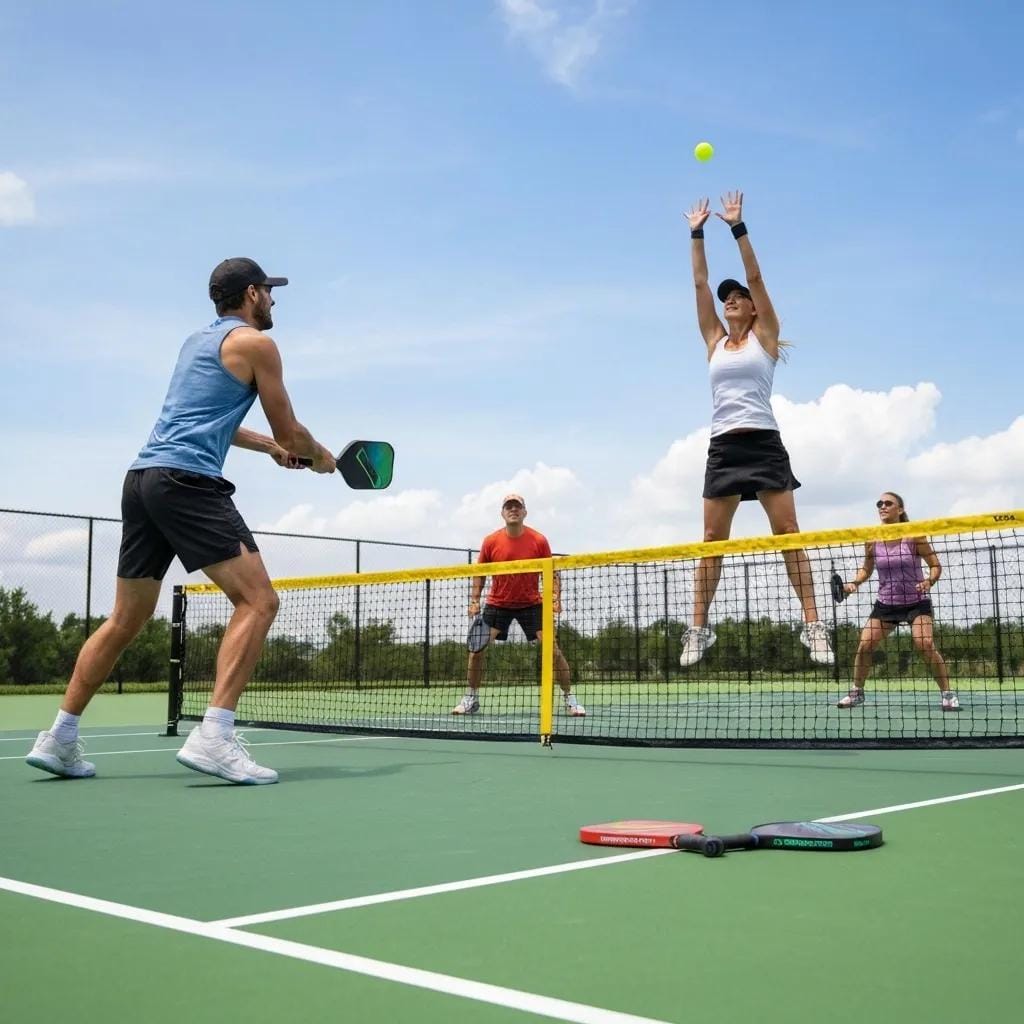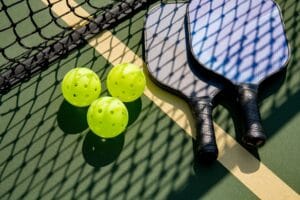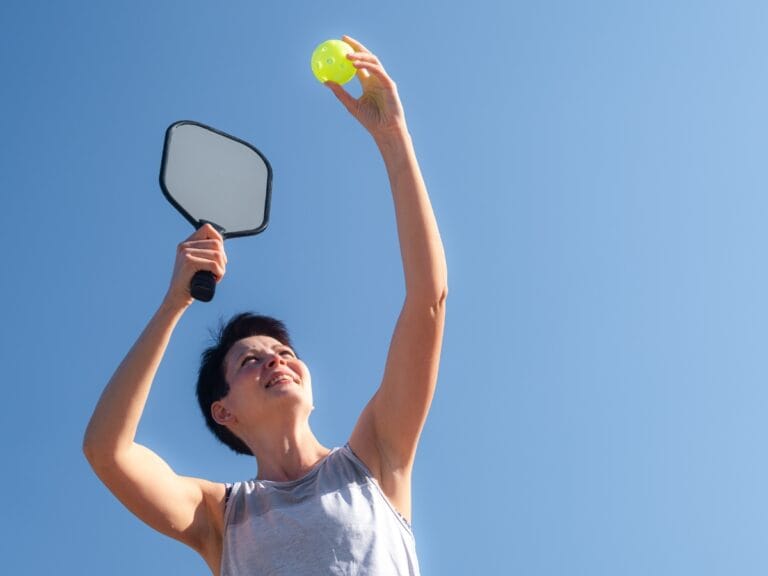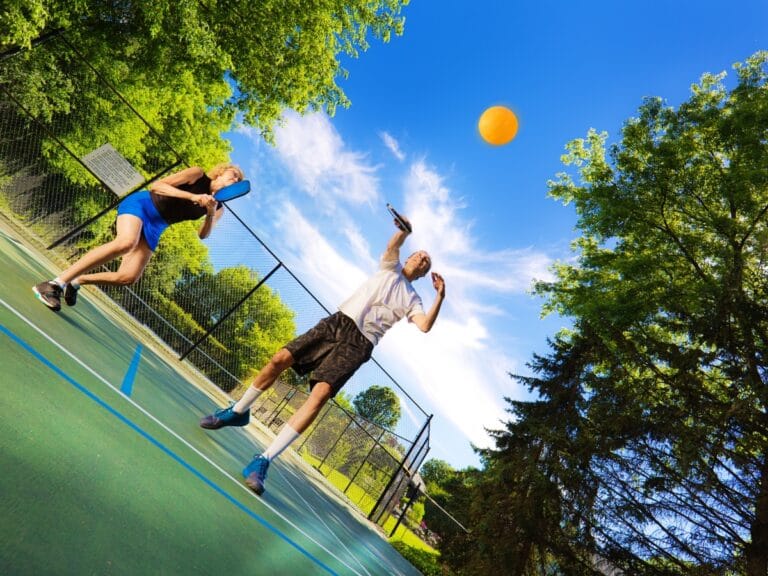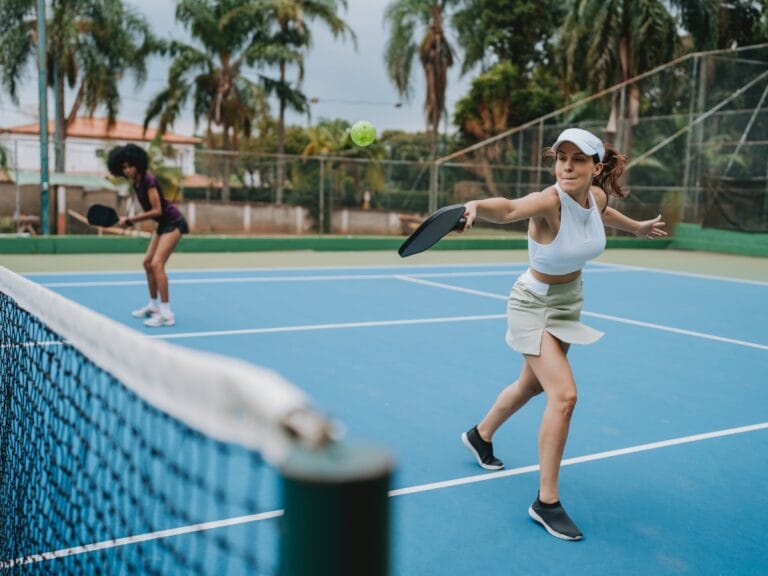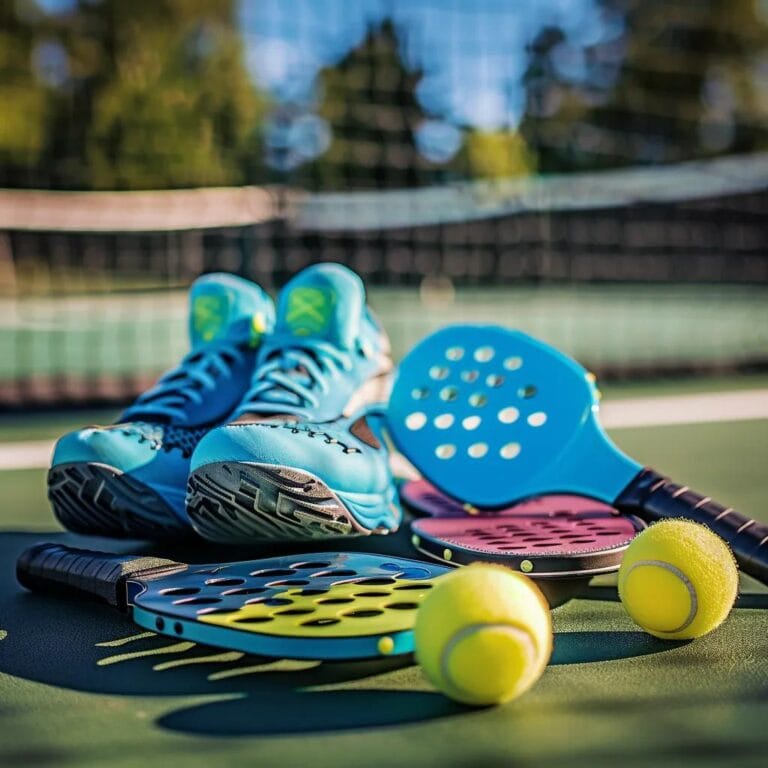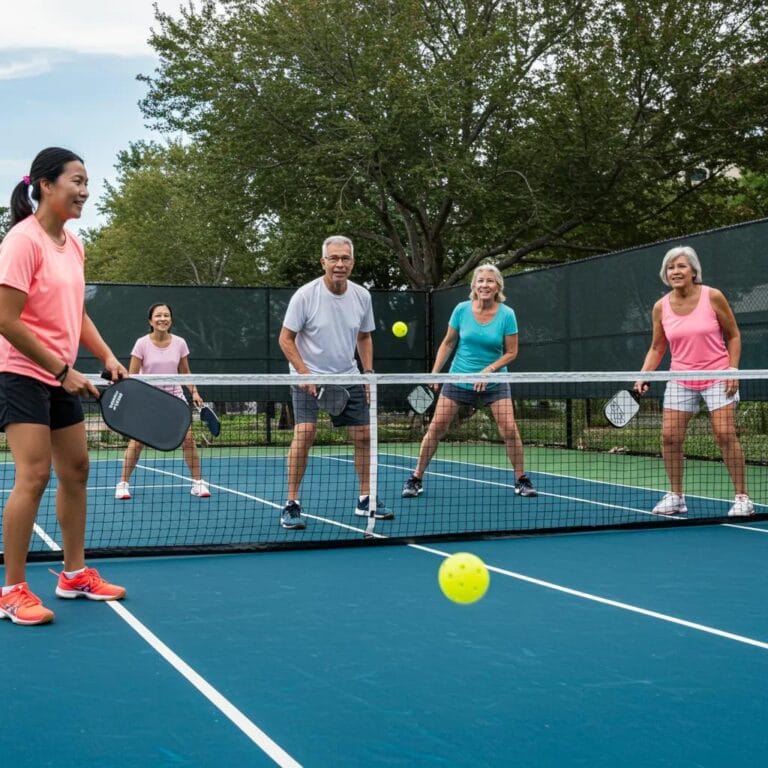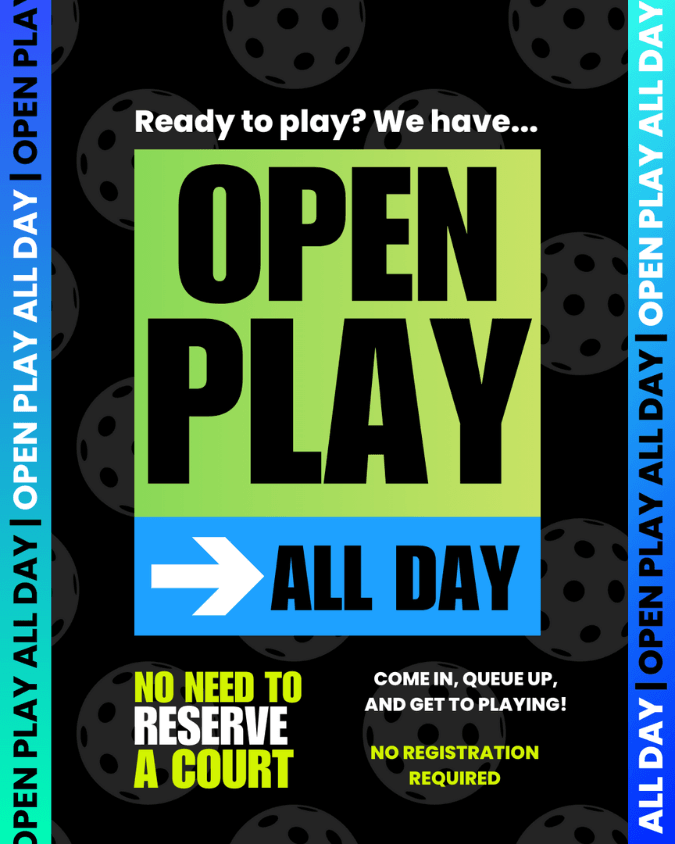Pickleball’s surging popularity isn’t just due to its social and accessible nature—it’s also thanks to a straightforward set of rules that new players can quickly learn and start enjoying. Whether you’re stepping onto the court for the first time or transitioning from another racket sport, understanding the basics—from serving diagonally and the two-bounce rule to the non-volley zone (known as “the kitchen”)—is key to confident and competitive play. In this guide, we break down the basic pickleball rules, scoring system, and common beginner mistakes so you can focus less on confusion and more on fun, rallies, and that satisfying pop of the paddle.
Master the Court: Basic Pickleball Rules Every Beginner Should Know
What Are the Core Pickleball Court and Gear Rules?

Before a match begins, confirm the court is marked correctly and that everyone is using approved gear. Clear lines, the right net height, and regulation paddles and balls keep play fair and safe. These basics sit at the heart of the game and are the quickest way to understand basic pickleball rules without getting lost in edge cases.
What Are The Official Pickleball Court Dimensions And Markings?
A regulation court measures 20 feet wide by 44 feet long. The net is 36 inches high at each sideline and 34 inches at center. Lines must show baselines, sidelines, right and left service areas, and the non-volley zone, often called the kitchen, which extends 7 feet from the net on both sides. Serves must land in the diagonal service box past the non-volley line, and you cannot volley while standing on or inside the kitchen. Keeping these dimensions and markings accurate prevents disputes and makes it easier to practice court positioning, footwork, and legal serves.
Which Pickleball Paddles Are Best For Beginners?
Beginner-friendly paddles stay within the total length limit of 24 inches, with most faces 16 to 17 inches long. A weight in the 7.5 to 8.5 ounce range offers a good blend of control and easy swing speed. Graphite and composite faces give a crisp feel and reliable touch; wood is durable and budget-friendly but usually heavier. Grip size matters as much as the face. Many new players do well with a grip circumference around 4 to 4.25 inches and a grip length near 4 to 5 inches. Choose a size that lets your fingertips lightly meet your palm without squeezing. An edge guard helps protect the rim from scuffs during digs and kitchen play. The right paddle reduces arm fatigue, improves ball control, and sets you up for consistent contact on serves and returns.
What Types Of Pickleball Balls Are Used In Play?
Official balls are lightweight plastic with holes. Indoor balls use fewer, larger holes and slightly softer plastic, which produces a quieter, higher bounce and predictable flight in calm air. Outdoor balls use more, smaller holes and firmer plastic to resist wind and rough surfaces. Typical diameters range from 2.82 to 2.97 inches, and weights fall between 0.78 and 0.935 ounces. Using the correct ball for the setting keeps rallies consistent. If you switch between indoor gyms and outdoor courts, expect to adjust paddle angle and swing speed. Outdoor balls come off the face faster and skid more on hard courts, while indoor balls linger on the paddle a touch longer.
How Court And Gear Rules Support Better Play
Dimensions, equipment specs, and ball selection are more than paperwork. A properly set court makes the non-volley zone clear, which reduces foot faults. A well-matched paddle improves touch for third-shot drops and blocks at the kitchen. The right ball for the venue stabilizes trajectory, so you can aim targets with confidence. When you nail these details, you spend less time second-guessing and more time executing core tactics like deep serves, deep returns, and smart dinks. Mastering these basics gives you a clean starting point for strategy and helps you apply basic pickleball rules without slowing the game.
How Do You Nail a Legal Pickleball Serve?
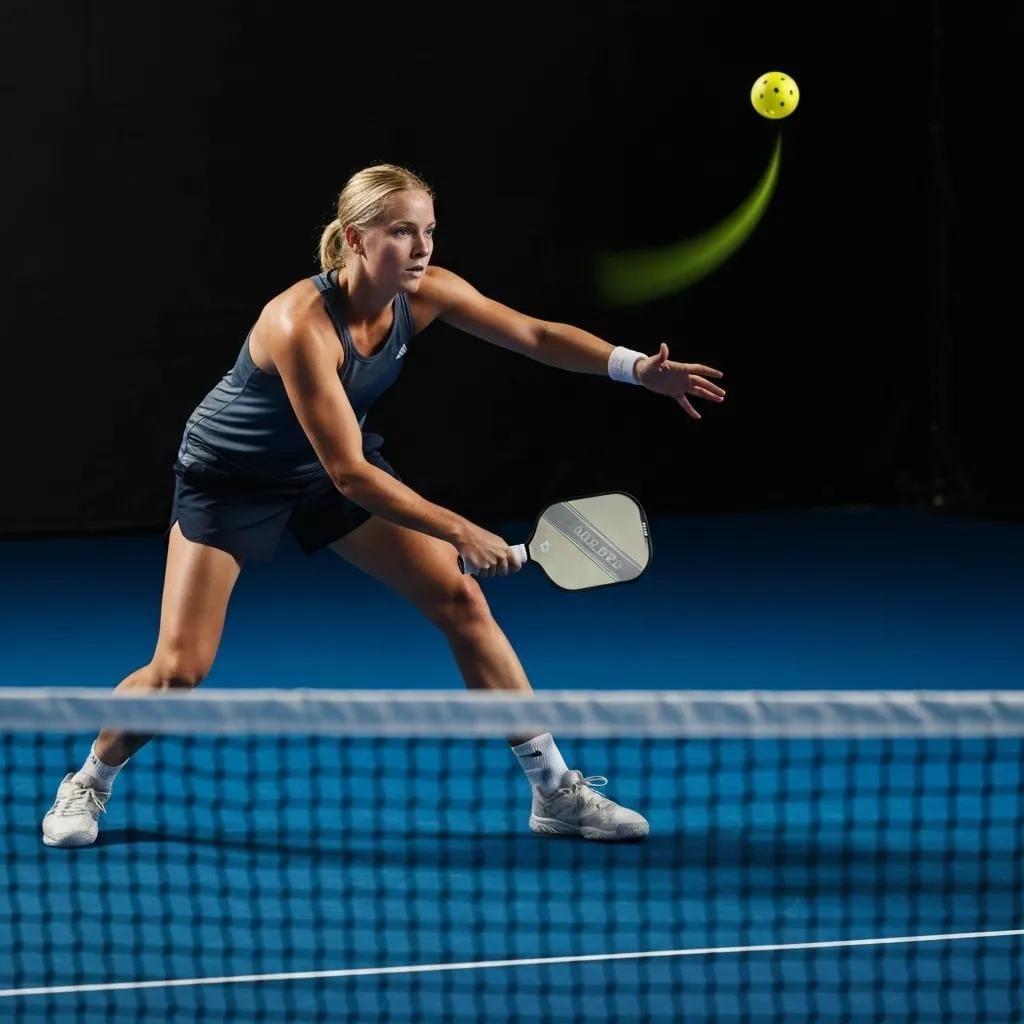
A legal serve is how every rally gets going. It’s all about technique, where you stand, and being precise. You’ll want to use an underhand motion, keep your paddle below your waist, and make contact with the ball behind the baseline. Nail these, and you’re set for a fair start to the point.
What Is the Correct Underhand Serve Technique?
For an underhand serve, you need to hit the ball below your belly button, swinging upward to get it over the net. Here’s the breakdown:
- Stand behind the baseline with both feet planted firmly.
- Keep your paddle below waist level.
- Drop the ball or swing your paddle to hit it in one smooth motion.
- Make sure the paddle head is lower than your wrist when you hit it.
- Follow through with your swing towards the service box you’re aiming for.
Getting these steps down means fewer service faults and a solid, repeatable way to start the rally.
What Are the Rules for the Drop Serve in Pickleball?
The drop serve is a cool alternative for beginners. You simply let the ball drop from your hand and hit it after it bounces once on the court. Here’s what you need to know:
- Release height: Keep it below wrist level.
- Ball must bounce once before you hit it.
- Contact point: Just like the underhand serve, hit it below your navel.
This option makes serving way more predictable and can speed up your learning curve.
Where Should You Stand When Serving to Avoid Foot Faults?
When you serve, both your feet have to be behind the baseline. You can’t touch any court lines until after you’ve hit the ball. Keep these foot placement rules in mind:
- Both feet completely behind the baseline.
- Don’t step on or over the extended sidelines.
- Keep your feet still until the ball is struck.
Getting your stance right means no foot-fault penalties and a smoother transition to your next shot.
How Does the Diagonal Serve Work in Pickleball?
Every serve needs to go diagonally into the opponent’s service box, and it has to land past the non-volley zone line to be good. To aim diagonally:
- Picture the far corner of the opposite service box.
- Angle your paddle face towards that corner.
- Swing smoothly to get the ball to land in the correct box.
Serving diagonally is key for strategic placement and starting rallies with control.
What Happens If Your Serve Hits the Net or Is Faulted?
If your serve grazes the net and lands in the correct service box (this is called a “let”), you get to replay the serve. Any other fault means you lose your serve. Here are the common outcomes:
- Let Serve: Ball hits net, lands in box → replay the serve.
- Fault Serve: Ball lands out, in the kitchen, or you hit it above your waist → side out (lose serve).
Knowing these scenarios helps you manage service rotation and scoring like a pro.
What Is the Two-Bounce Rule and Why Is It So Important?
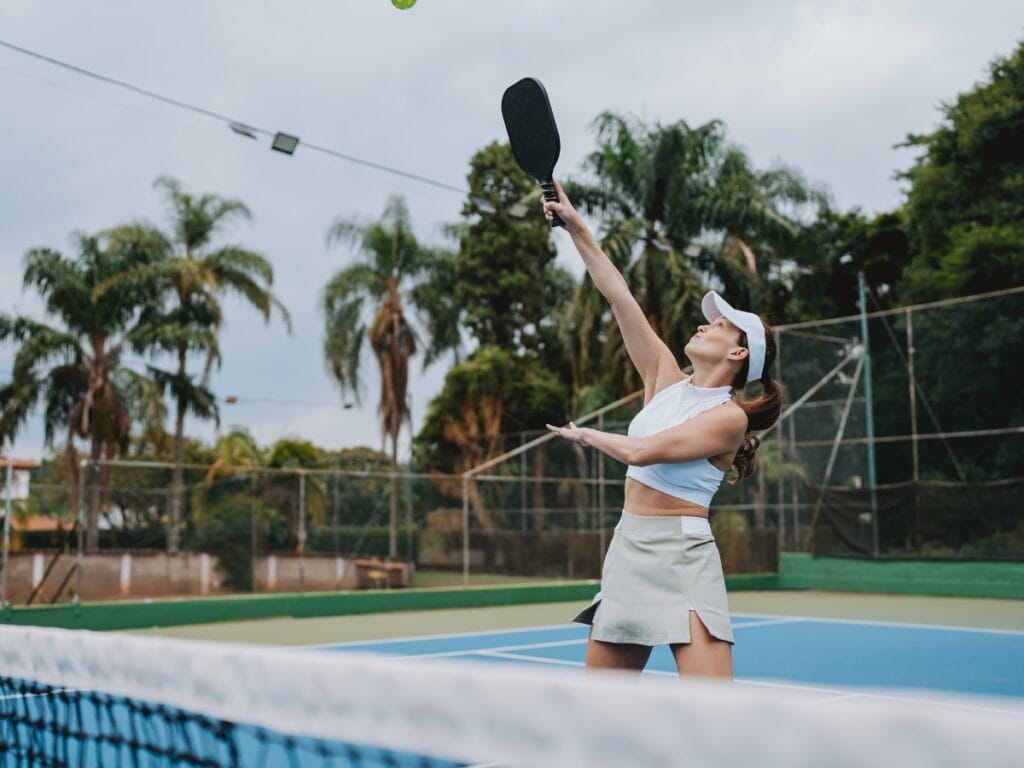
The two-bounce rule sits at the center of basic pickleball rules. After a legal serve, the ball must bounce once on the receiver’s side and once on the serving side before any player hits a volley. Those two groundstrokes create a fair start to every rally, slow the initial pace, and prevent easy put-aways at the net. Because both sides must hit from the bounce before closing in, rallies last longer and shot selection matters more than sheer aggression.
How Does The Rule Shape The Server’s First Shot?
The server or serving team must allow the return of serve to bounce before striking the ball. Swinging at that first return in the air is a fault. This requirement forces the serving side to plan for a groundstroke as their second shot, often a deep, high-percentage reply aimed at the middle. That neutral ball buys time to move toward an effective position without breaking the rule.
What Are The Receiving Team’s Responsibilities?
The receiving team’s first job is to let the serve bounce. If the receiver volleys the serve, the point ends immediately with a fault. After that initial bounce, the receiver typically drives a deep return to keep the serving team at the baseline. The server must then let that return bounce, completing the second of the two required bounces. Only after both bounces occur can either side consider taking the ball out of the air.
When Can Players Start Volleying?
Once the ball has bounced once on each side, volleys are legal from anywhere outside the non-volley zone. The moment the second bounce happens, play opens up. Players can move forward, take balls early, and speed up exchanges. Good teams recognize this transition and close the distance to the kitchen line quickly, since net position controls angles and makes offense easier.
How Do Kitchen Boundaries Interact With The Rule?
The non-volley zone, or kitchen, is the 7-foot strip on each side of the net. Even after the two bounces are satisfied, you cannot volley while standing in that zone or touching its line. Feet must be fully outside the kitchen at the moment of contact on any volley. Groundstrokes may be hit from inside the zone after a bounce, but players need to recover back out to avoid foot faults on the next volley attempt.
What Are Common Faults Tied To The Two-Bounce Rule?
Three mistakes show up often. Volleying the serve is a fault on the receiving side. Volleying the return of serve is a fault on the serving side. Rushing the net and volleying with any part of your body on or over the kitchen line is also a fault. New players can avoid these by calling out “bounce one” on the serve and “bounce two” on the return to lock the sequence into habit.
How Can You Practice The Timing?
Start with short-court rallies where both players agree to hit only groundstrokes until each side has seen its bounce. Add a target for the return of serve, such as a deep corner, to learn depth control. Then introduce a cue to advance to the kitchen only after the second bounce. Repetition builds the rhythm of serve, return, mandatory bounce, and then controlled aggression at the net.
Mastering the two-bounce rule clarifies court movement, reduces avoidable faults, and creates cleaner transitions to net play. Nail this sequence and you will apply the rest of the basic pickleball rules with more confidence and consistency.
What Are the Pickleball Kitchen (Non-Volley Zone) Rules Every New Player Should Know?
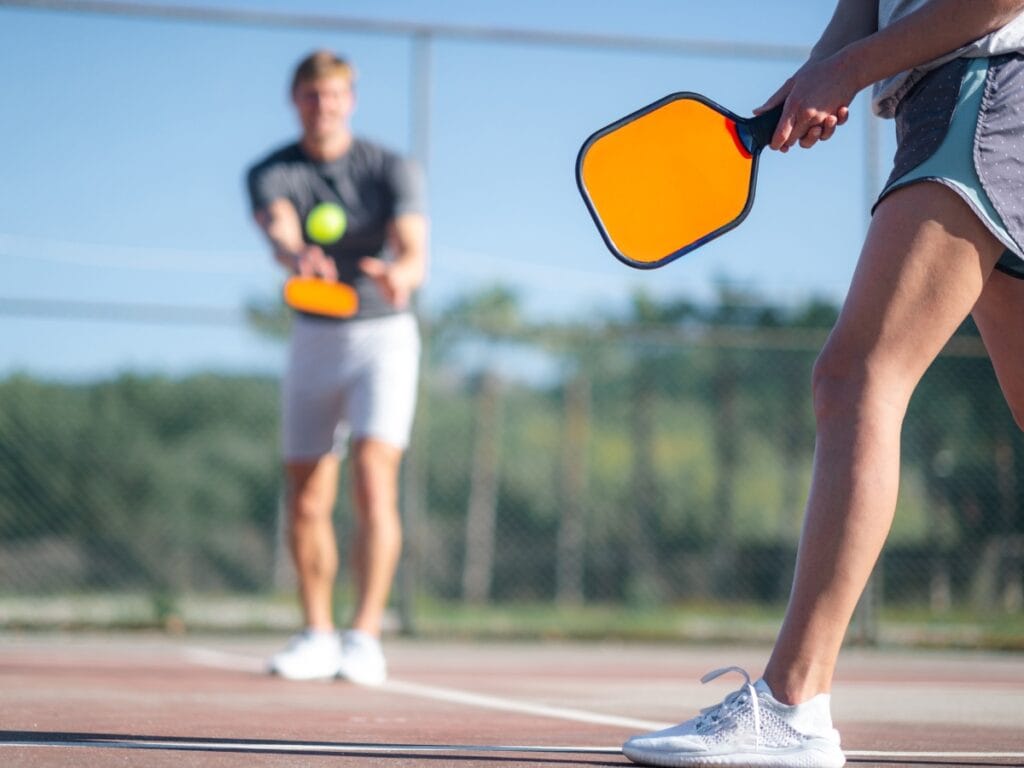
The kitchen, also called the non-volley zone, is the 7-foot strip next to the net on both sides. The headline rule is simple: you cannot volley while any part of you touches that zone or its line. You may step into the kitchen to hit a ball that has bounced, then step back out before attempting a volley. These boundaries protect players and keep points from turning into net-crashing contests. If you are learning basic pickleball rules, mastering the kitchen guidelines is one of the fastest ways to cut down on faults and keep rallies alive.
What Defines The Non-Volley Zone On The Court?
The non-volley zone runs the full width of the court and extends 7 feet from the net. The kitchen line itself is part of the zone. That detail matters because contact with the line counts the same as contact inside the zone. You can enter to retrieve a soft shot that bounces, play your dink, and then reestablish both feet outside the zone before taking any ball in the air. Think of the kitchen as a place for groundstrokes and touch, not for swinging at balls before they bounce.
Why Is Volleying Prohibited In The Kitchen?
Banning volleys at the net creates safer spacing and a fair opening to each rally. Without the restriction, a tall player could camp on the tape and end points with easy put-aways. The rule forces everyone to respect angles, depth, and footwork. It also encourages shot variety. Soft dinks, drops, and resets become valuable tools, and players must choose when to move forward instead of charging recklessly. The result is longer exchanges, more strategy, and fewer collisions around the net.
What Are Common Kitchen Faults And How Do You Avoid Them?
The most frequent mistake is volleying with a foot on, or over, the kitchen line. Even a toe on the paint when you contact the ball in the air is a fault. Another common error is momentum carrying you into the zone after a volley. If your follow-through or recovery step lands in the kitchen, the point is lost, even if contact happened outside. A third miscue is striking a ball in the air while you are still in the zone after playing a dink. The fixes are straightforward. Set your stance behind the line before you attempt a volley. After every volley near the kitchen, freeze your finish for a beat to confirm balance. When you step into the zone to play a bounce, recover back out immediately so you are legal for the next shot.
How Can You Use The Kitchen Strategically With Dinking?
Dinking is the art of dropping the ball softly into the kitchen to take speed out of the rally and force errors. Aim for low, unattackable shots that land near your opponent’s feet or skid toward the sidelines. Keep your paddle face quiet and your contact point out in front so you can change direction at the last second. Mix depth and height to test balance. A shallow dink draws an opponent in, then a slightly deeper ball pushes them back and opens angles. When a return floats high above net level, that is your cue to step in, reestablish outside the line, and take the next ball out of the air. The momentum shift often starts with one quality dink that wins you a softer reply.
How Do The Kitchen Rules Fit With The Flow Of A Point?
After the serve, the two-bounce rule guarantees a bounce on each side before anyone can volley. Once those bounces occur, play opens up, but kitchen limits still apply. Good teams close to the line, hold legal footing, and use patient dinks to create a ball they can attack. Stay disciplined with your feet, let low balls bounce when needed, and you will convert more points without giving away free faults.
How Does the Pickleball Scoring System Work for New Players?
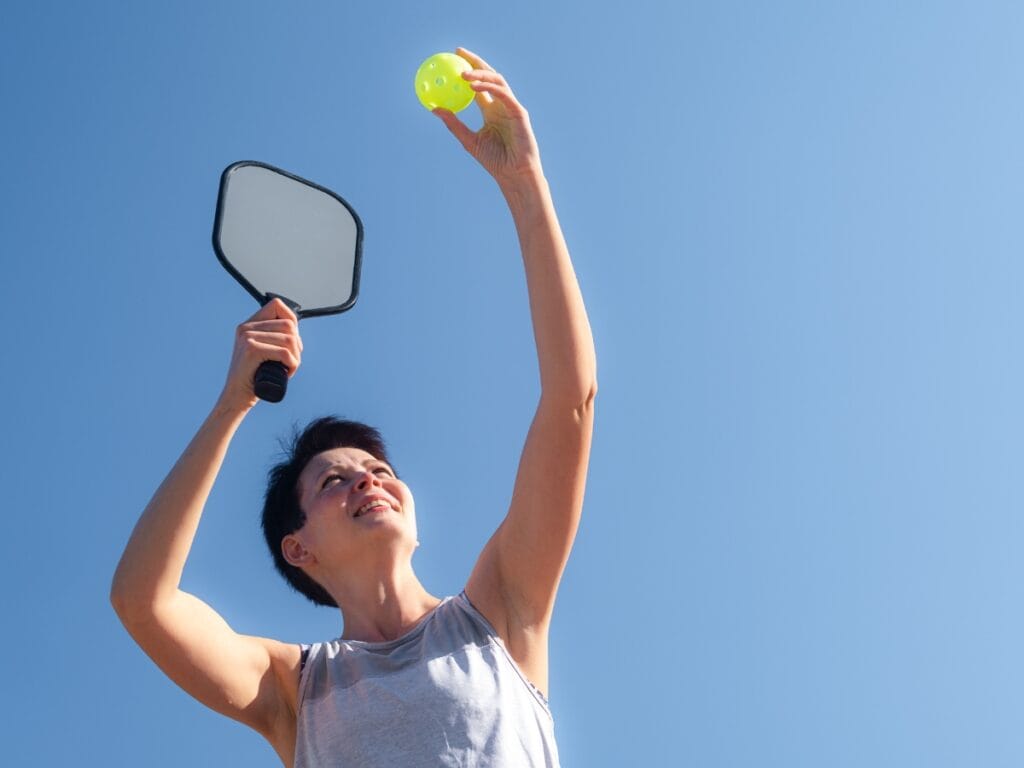
In standard play, pickleball uses side-out scoring. That means only the serving side can put points on the board. Rallies matter for momentum, but if the receiving team wins a rally, they do not score. Instead, they gain the serve or move the serve to the next player on their team. Games typically go to 11 and you must win by 2, though some events use 15 or 21 for longer formats. If you are learning basic pickleball rules, start by locking in how the serve rotates and when a rally actually produces a point.
How Are Points Scored In Pickleball?
A point is awarded only when the serving team wins a rally. If the serving team commits a fault, no point is given and the serve passes to the partner or to the other side, depending on where you are in the sequence. Faults include hitting out, into the net, volleying in the kitchen, or missing the correct service box. Because points flow from the serve, staying consistent at the line is more valuable than swinging for risky winners. Think of every hold of serve as a chance to stack points before a side out resets control.
What Is The Difference Between Singles And Doubles Scoring?
In singles, the score call has two numbers: server’s score first, receiver’s score second. The server always starts on the right when their score is even and on the left when it is odd. In doubles, the call has three numbers: serving team’s score, receiving team’s score, then the server number, either 1 or 2. The big wrinkle is the opening serve of the game. It begins at 0-0-2 so the first team only uses one server before a side out. After that first change of possession, both partners on each side serve in turn. Server 1 starts on the right, alternates courts after each point, and keeps serving until a fault, then Server 2 takes over. When Server 2 faults, it is a side out and the other team begins its two-server turn.
How Do You Win A Game: Score To 11 And Win By 2 Explained?
Most games end at 11 with a 2-point margin. If the score reaches 10-10, play continues until one side leads by 2. Tournament directors sometimes set games to 15 or 21, but the win-by-2 requirement remains. Keep an eye on the rotation as the score climbs. Serving from the correct side is part of the rules, and an incorrect position can erase a point if it is caught before the next serve. Calling the score clearly before every serve helps both teams track where Server 1 and Server 2 should stand.
What Are Common Scoring Mistakes And How Do You Avoid Them?
The most common errors are calling the numbers out of order in doubles, forgetting that the first call of the game is 0-0-2, and serving from the wrong side after a point. Another frequent miss is assuming rally scoring, where either side can score, which is not the case under official rules. To prevent confusion, pause before each serve, say the score out loud in the correct order, and verify your court position with the even-odd cue. If something feels off, stop and sort it out before the next serve so a preventable correction does not cost you a hard-earned point.
Can You See A Quick Example Of Doubles Scoring In Action?
Imagine Team A starts the game at 0-0-2 and faults. It becomes Team B’s serve at 0-0-1 on the right. Team B wins the rally and calls 1-0-1, then serves from the left. They fault, so the second partner calls 1-0-2 on the right. After that partner faults, it is a side out and Team A regains the serve at 0-1-1. Follow this pattern and the logic becomes second nature. With clear calls and steady serving, the scoring system supports fair, fast play without breaking your focus.
What Are the Most Common Pickleball Faults and How Do They Affect Play?
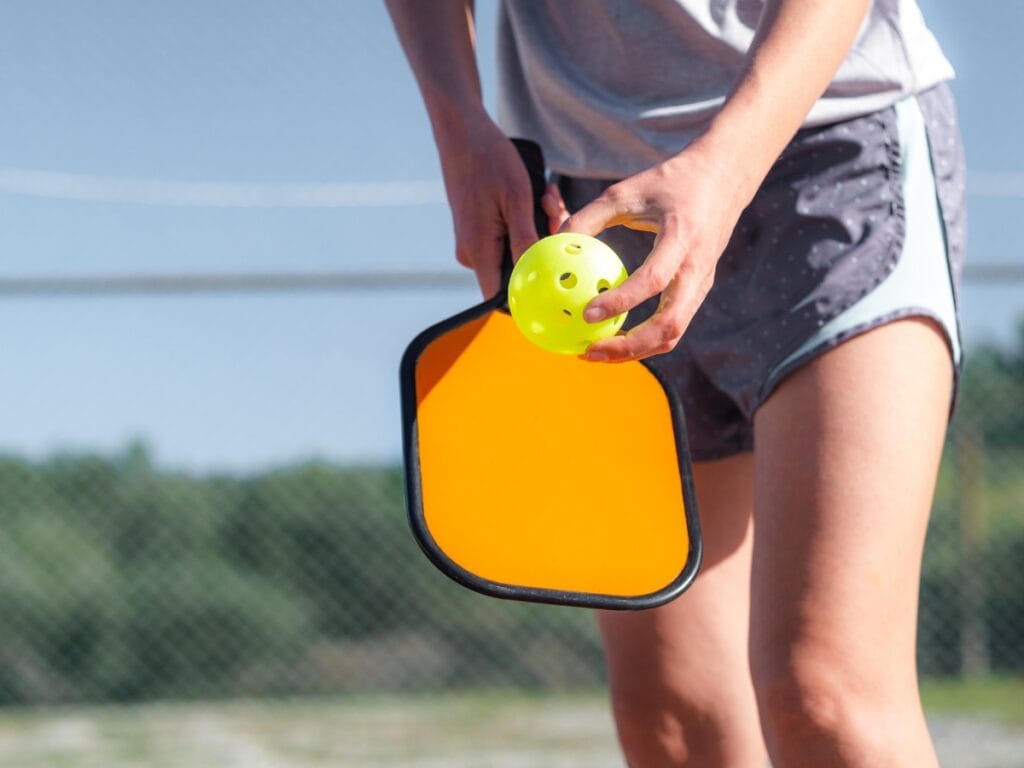
In pickleball, a fault ends the rally immediately. If your team is serving, a fault can either move the serve to your partner or create a side out and hand control to the other team. If you are receiving, a fault awards a point to the serving side. Learning the most frequent mistakes is one of the fastest ways to improve because it protects your serve, keeps rallies alive, and turns close games in your favor. As you learn basic pickleball rules, focus on clean serves, patient footwork near the kitchen, and clear awareness of bounce requirements.
What Are Typical Service Faults To Watch For?
A legal serve must clear the non-volley zone and land in the diagonal service box. If the ball hits the net and drops short or lands long or wide, the serve is a fault. The motion matters too. Contact should be made below the waist with an upward swing, and at least one foot must stay behind the baseline until the ball is struck. Foot faults are common when players creep forward or step on the line during the motion. Keep your stance a few inches behind the baseline, relax the wrist, and aim deep middle to lower your error rate and hold serve more often.
How Do Two-Bounce Rule Violations Lead To Faults?
After the serve, the ball must bounce once on the receiver’s side and once on the server’s side before anyone is allowed to volley. If either team volleys early, it is a fault. This rule is designed to prevent easy put-aways at the net and to give both sides a fair start to each point. The easiest way to avoid violations is to decide before the rally who will take the second shot on your team. Call “bounce” out loud when receiving or returning to reinforce the timing and keep your paddles down until the ball clearly hits the court.
What Are Non-Volley Zone Faults And Why Do They Matter?
The non-volley zone, often called the kitchen, extends seven feet from the net on each side. You can step into this zone at any time, but you cannot volley while any part of your body or your paddle is touching the zone or its line. If momentum carries you forward after a volley and you touch the kitchen, that is also a fault even if contact happens after the ball is dead. To stay legal, establish your feet behind the line before attempting a volley, keep your weight balanced on the balls of your feet, and reset to neutral after every strike so momentum does not pull you in.
What Other Faults Should New Players Know?
Double hits and carries are illegal. A double hit happens when the ball contacts your paddle twice in a single swing. A carry occurs when the ball rests on the paddle and is propelled rather than being struck cleanly. Hitting the ball into the net or outside the lines is a fault, as is contacting a permanent object like a fence or ceiling before the ball lands in. If a ball clips a player or their clothing before bouncing out, the point goes to the striker. Clear calls and quick acknowledgments keep play friendly and efficient.
How Can You Reduce Faults And Keep Momentum?
Build a simple checklist. Announce the score and visualize the target box before every serve. Call “bounce” on the first two shots to respect the rule. Plant your feet behind the kitchen line before any volley and retreat a step after contact. When in doubt, choose a safer, higher margin shot that keeps the ball deep and in. Fewer faults mean more chances to score, steadier nerves in tight moments, and a smoother path from learning basic pickleball rules to winning more games.
How Can New Players Practice Pickleball Etiquette and Sportsmanship?

Good etiquette keeps games friendly, fair, and fun. It starts before the first serve and continues after the last point. Greet partners and opponents, agree on the format, and set expectations for line calls. When questions come up, defer to the team with the best view and keep the tone calm. Learning the spirit behind basic pickleball rules helps you make better choices in the moment and builds a positive reputation at your local courts.
How Should You Call The Score And Make Line Calls?
Announce the score before every serve, loud enough for all players to hear. In doubles, say server number, your team’s score, then the opponent’s score. Pause a moment to confirm everyone is ready, then serve. For line calls, use the “benefit of the doubt” approach. If you did not clearly see the ball out, call it in. Make calls immediately and confidently, and repeat them if wind or crowd noise makes them hard to hear. If a dispute remains, replay the point and move on. Clear, timely communication keeps matches flowing and prevents frustration.
What Is The Proper Way To Return Balls To Opponents?
Safety and courtesy go together. When a rally ends, roll or tap the ball underhand to the other side rather than tossing it high or driving it hard. If a stray ball enters your court, call “ball” right away, stop the point, and return the ball safely. Do the same for neighboring courts. Small habits like these prevent rolled ankles and collisions, and they show respect for everyone sharing the facility.
What Are General Court Conduct Guidelines For New Players?
Arrive a few minutes early so you can warm up without delaying others. Wait for the current point to finish before walking behind a court, and cross quickly at the back fence or designated gate. Keep bags, water bottles, and chairs clear of play areas. If your group is using open courts, follow local rotation rules so everyone gets fair time on the court. Compliment good shots from either side and keep body language in check after mistakes. A quick paddle tap or brief “good game” at the end of a match goes a long way.
How Do You Show Respect During Play And Between Points?
Call lets and hindrances only when they genuinely affect a rally, and be willing to replay the point. Do not rush the serve if a player is adjusting equipment or tying a shoe. Keep conversations with spectators short and save coaching for timeouts or after the game. Silence phones and avoid music on speaker unless all players agree. If you hit an opponent accidentally, apologize and give a moment to reset before the next serve.
How Can Beginners Build Good Habits Quickly?
Start each session by reviewing court boundaries and the non-volley zone so everyone shares the same understanding. Ask partners how they prefer to handle close calls and signals. Practice consistent score calls during drills, not just in games. When you make an error, own it and move on rather than debating. These habits reinforce sportsmanship, reduce conflict, and let the best part of the sport shine: steady rallies, shared laughs, and a welcoming community grounded in basic pickleball rules.
Where Can New Players Find Pickleball Courts and Lessons in Atlanta?
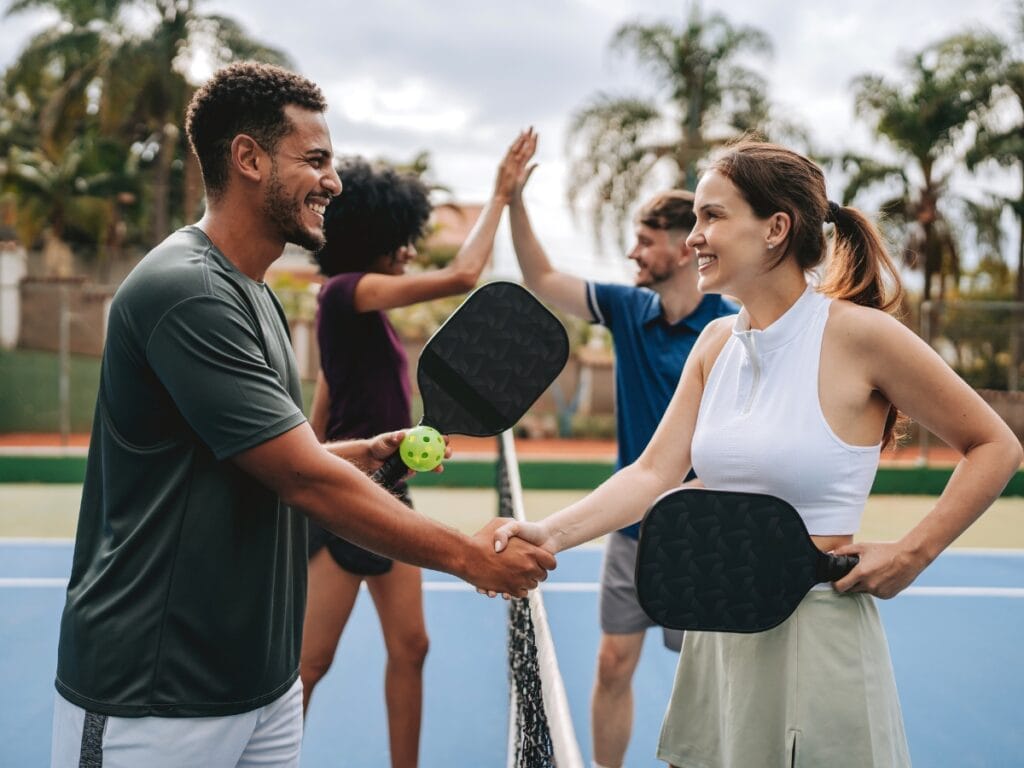
Atlanta has a great mix of indoor spots, public parks, and community centers where you can learn and play pickleball all year round. Planet Pickle in Suwanee is especially great at welcoming beginners and families into a lively, social atmosphere.
What Are the Best Pickleball Courts in Atlanta for Beginners?
If you’re new to Atlanta and pickleball, you might want to check out:
- Community recreation centers that offer scheduled beginner hours
- Public parks with dedicated pickleball courts
- Indoor sports complexes where you can reserve courts
These places often have structured times and beginner-friendly setups to help you build confidence.
Where Can Families and Adults Take Beginner Pickleball Lessons in Atlanta?
Local clubs and sports academies run weekly beginner sessions, family clinics, and private coaching. Group lessons focus on the core fundamentals, while family programs offer fun drills for all ages.
Getting structured instruction speeds up your learning and creates a supportive environment.
How Can You Join the Atlanta Pickleball Community and Events?
Signing up for local leagues, hitting up open play sessions, and checking community boards are fantastic ways to meet other players. Social mixers, charity events, and round-robin tournaments offer relaxed settings to improve your skills and connect with others.
Getting involved in events turns rule mastery into lasting friendships and keeps your motivation high. Pickleball‘s straightforward rules unlock tons of social fun and strategic depth. By understanding every guideline – from setting up the court to keeping score – you’ll enjoy more rallies and fewer faults. Come on over and embrace the journey at Planet Pickle’s indoor facility in Suwanee, where friendly coaching and community events help new players shine. Keep practicing these rules, stay curious about strategy, and you’ll be confidently rallying with others before you know it.
Conclusion
Now that you’ve learned the basic rules of pickleball, it’s time to grab a paddle and experience the excitement for yourself! At Planet Pickle, we welcome players of all skill levels with state-of-the-art courts, beginner-friendly clinics, and a vibrant community of enthusiasts. Whether you’re looking to practice your newfound skills or join a league, we provide the perfect environment to learn, play, and connect. Ready to serve up some fun? Call 678-404-5792 today to book court time, explore our programs, and discover why pickleball is the fastest-growing sport in America. Your next game awaits!

